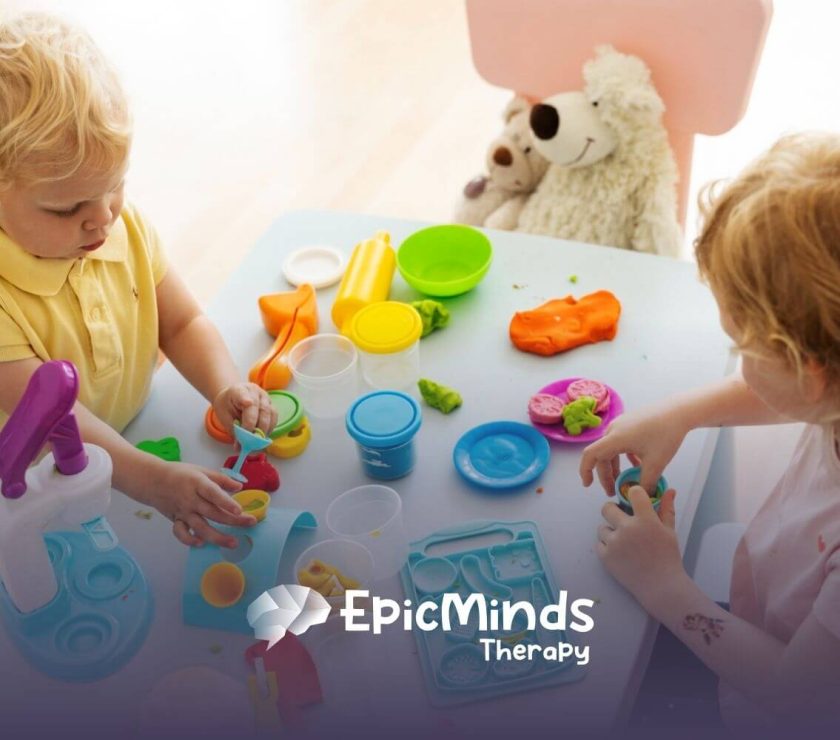Key Highlights
- Parental presence during ABA therapy sessions is shaped by clinic guidelines, home-based ABA settings, and individual child needs along the autism spectrum.
- ABA therapists stress the importance of parent training to help reinforce positive behaviors and ABA strategies outside the therapy room.
- Active involvement can accelerate a child’s skill development and support generalization of new skills across daily routines.
- Both real-time feedback and open communication strengthen the parent-therapist partnership for better therapy outcomes.
- Parental involvement offers benefits but can also pose challenges, including distractions or emotional hurdles for both the parent and child.
Have you ever wondered if your presence during your child’s ABA therapy sessions is truly beneficial? It’s a question many parents grapple with. As an ABA therapist, I’ve seen how parental involvement can either accelerate progress or sometimes become a barrier.
A few years ago, I worked with a young boy named Sean, whose mother stayed in every home-based ABA therapy session. Initially, Sean was thriving, but soon I noticed he started to look more to his mom for reassurance than engaging with the therapist. This is a perfect example of how crucial it is to find the right balance.
In this post, we’ll explore the impact of parental presence during ABA therapy. We’ll discuss when it’s beneficial, when it might be best to step back, and how you can support your child’s progress in therapy—even if you aren’t physically in the room.
Parental Presence During ABA Therapy: Policies and Preferences
Every child is unique, so there’s no one-size-fits-all approach to parental involvement in ABA therapy. Some parents prefer to stay in the room during sessions, while others find it’s better to observe from a distance or wait outside. ABA therapists tailor their recommendations based on what’s most beneficial for your child.
I’ve often seen firsthand how a child’s comfort level plays a big role. For instance, in my early years as an ABA therapist, I worked with a child who became extremely distracted when her mother was in the room. She’d frequently look to her mom for reassurance instead of engaging with the therapist. In cases like these, therapists may ask parents to step outside to help the child focus on the task at hand.
It’s also important to note that different settings have their own guidelines. Some clinics may ask parents to observe from behind a one-way mirror, while home-based therapy often invites more direct involvement to promote skill generalization.
How Parental Involvement Differs Across Settings
The role of parents in ABA varies depending on whether the therapy takes place in a clinic, at home, or in a community setting. Here’s a comparison of these settings:
| Setting | Typical Parental Involvement | Common Therapy Techniques |
| Clinic-Based ABA | Parents often observe or participate in training sessions. | Discrete trial training, modeling |
| Home-Based ABA | Parents typically play a hands-on role in reinforcing behaviors. | Natural environment teaching, role play |
| Hybrid/Community Sites | Varies—can include a mix of observation and hands-on guidance. | Group activities, social skills training |
Each approach has its benefits. For instance, home-based therapy allows for real-life practice of new skills, while clinic-based therapy offers structured training and expert guidance.
How ABA Therapists View Parental Participation
As an ABA therapist, I can tell you that parental involvement is crucial for the long-term success of therapy. When parents are actively involved, they get a first-hand look at how strategies are implemented. This helps them apply what they’ve learned at home and provide consistent reinforcement.
In one of my past sessions, I worked with a child who was struggling to use a communication device. The parent had been trained to model the use of the device in various situations. When the parent stayed during therapy, we could reinforce these techniques in real-time, resulting in noticeable progress by the end of the session.
Therapists often encourage parents to ask questions, provide input, and learn the ABA techniques used during therapy. This collaborative approach helps align the efforts at home and during therapy, leading to better outcomes.
Key Benefits When Parents Stay During Sessions
Parents who stay during ABA therapy sessions often experience immediate benefits. By watching the therapy in action, they can understand how techniques like positive reinforcement work and how to implement them at home.
For example, I once worked with a parent who wasn’t sure how to reinforce their child’s use of eye contact. After observing the therapist in action, the parent was able to practice in real-time. This led to significant improvement in the child’s social skills over the following weeks.
Staying involved also allows for quick support during therapy sessions. If your child struggles with a task, you can immediately step in and provide reassurance, helping them refocus or complete the task.
How Active Participation Enhances Child Learning
The biggest advantage of being present during therapy is that you can help reinforce new skills as they are learned. The more consistent you are in applying what you learn, the faster your child will progress.
By participating in therapy, you also learn how to handle challenging behaviors and reinforce positive behaviors throughout the day. This consistency across environments (e.g., therapy sessions, home) is key for long-term success.
Challenges and Drawbacks of Parental Presence
While parental involvement can greatly enhance therapy, there are also potential challenges. In some cases, a child may become too reliant on their parent for support, which can interfere with their independence. I’ve witnessed situations where a child would only respond to their parent’s prompts, even when the therapist was attempting to guide them.
Parental presence can also create emotional hurdles for both parents and children. Parents might feel anxious or frustrated by slow progress, and children might struggle with new social interactions if they sense their parent’s anxiety.
Risks of Over-Involvement
It’s easy for a parent to feel like they should be involved in every aspect of the therapy. However, over-involvement can create confusion and disrupt the therapeutic process. Here are some potential risks:
- Dependency: Children may depend too much on their parents for support.
- Inconsistent signals: If parents and therapists aren’t aligned in their approach, it can confuse the child.
- Distraction: A parent’s presence may distract the child from focusing on therapy tasks.
In some cases, the therapist might recommend stepping back and allowing the child more independence to avoid these issues.
Emotional Hurdles for Parents and Children
Emotions run high during therapy, both for parents and children. As a parent, you might feel anxious when you see your child struggling with a new task. You might also feel guilty if you can’t attend every session or if you need to step back to allow the therapist to take the lead.
One of my clients once shared how difficult it was for them to leave the room during sessions, even though it was clear that their child performed better when they weren’t present. This is a common challenge, but it’s important to remember that therapy is a partnership, and your child’s therapist is there to guide you through the process.
Conclusion: Finding the Right Balance for Your Child’s Progress
In the end, whether or not parents should stay during ABA therapy depends on several factors, including the child’s needs and the setting. While being present offers many benefits, it’s important to strike a balance. Parents should feel confident in stepping back when needed and allow therapists to take the lead.
The most important thing is communication. If you’re unsure whether your involvement is helping or hindering your child’s progress, talk to your therapist.
Looking for ABA therapy in North Carolina?
At Epic Minds Therapy, we understand the importance of personalized, child-focused care. Our experienced therapists work closely with you to ensure your child’s progress, whether you’re actively involved in sessions or supporting from home.
Ready to get started? Contact us today to learn more about our ABA therapy services and how we can help your child reach their full potential.
Frequently Asked Questions
Are there situations where parents should not attend ABA sessions?
Yes, sometimes parents are asked to step outside the room if their presence is distracting or if the child is more likely to focus on their parent than the therapist. This decision is based on the child’s needs and comfort level, ensuring the best outcome for their therapy.
How can parents support ABA therapy at home if they are not present during sessions?
Parents can help by establishing consistent routines at home, practicing the techniques learned in parent training, and maintaining open communication with the therapist. Consistent reinforcement at home is just as important as what happens in therapy sessions.
What is the best way for parents to communicate with ABA therapists?
Maintaining regular communication with your therapist is key. Discuss what you observe at home, ask for feedback, and ensure that you are aligned on strategies. This ongoing dialogue helps you stay informed and involved in your child’s progress.
Sources:
- https://www.bhcoe.org/2021/07/the-role-of-caregiver-involvement-in-aba-therapy/
- https://pmc.ncbi.nlm.nih.gov/articles/PMC11540247/
- https://pmc.ncbi.nlm.nih.gov/articles/PMC11017782/
- https://scholarworks.waldenu.edu/cgi/viewcontent.cgi?article=1536&context=jsbhs
- https://pureadmin.qub.ac.uk/ws/files/16208855/Parents_experiences.pdf




